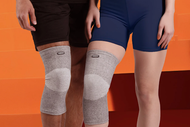Biohacking is a technique that allows you to hack your body's biology to improve your health. It helps you understand what is and isn't good for you, which is a refreshing step away from using generic advice in the hopes that you'll see a difference.
If you're new to the concept, we're here to explain how biohacking works, what you can try, and ways to stay safe.
Biohacking involves using science and self-experimentation to improve your health. In a sense, it takes the power out of your doctors' hands and places it firmly into your own. By taking a strategic approach, you can manipulate your body's biology to heal rapidly and experience other health benefits.
Biohacking comes in many forms, including:
While some biohack techniques build on basic lifestyle advice, others move beyond everyday health improvements and dig deep into scientific processes. Overall, biohackers take an individualized approach, whereas someone making simple lifestyle changes follows generic evidence-based proformas.
A biohacker can only know they're improving by monitoring their own biology. They can do this by using wearable technology, having blood tests done, and more.
It's essential to approach biohacking from a balanced perspective, which means being aware of the risks involved.
They include:
From changing your body composition to offsetting chronic disease, there are many health problems that biohacking can tackle. We're focusing specifically on how you can biohack your way to faster healing.
Nutrigenomics is the art of altering your diet to affect your gene expression and overall health.
Common approaches include:
Hormesis involves exposing your body to different stressors to improve your health. One of the most popular biohack techniques is exposing yourself to extreme environments, including low temperatures.
Cold water therapy is a popular way to improve your physical health, and evidence shows that it can tackle chronic pain, improve mental performance, and aid weight loss.
However, before you dive into an immersion tank or take up cold water swimming, it's worth examining the research further:
Another more controversial approach to hormesis involves exposing yourself to toxic compounds. As one of the riskier elements of biohacking subculture, this should be approached with caution.
One piece of research looks at the way wounds respond to metal cations, low-level laser therapy, and turmeric extracts. Overall, it shows that this exposure results in more fibroblasts (cells that lay down connective tissue) and collagen at the wound site. This suggests that the body's response to hormesis is positive, but it's wise to seek expert advice before using it as a part of your DIY biohacking plan.
Anti-aging biohacking techniques sometimes overlap with approaches that promote healing and recovery. In the short term, they may help you with injuries, and in the long term, they might result in life extension.
Some of the more achievable approaches to anti-aging biohacking include:
Genetic testing is more accessible than ever. It moves beyond the realms of understanding the risks associated with conception and allows you to understand your predisposition to various adverse physical states.
With genetic biohacking, you can learn more about collagen metabolism, giving you the chance to tweak your supplements to promote healing. You can also understand more about how you react to certain foods, allowing you to eliminate them from your diet.
The right tests may also help you learn more about how you absorb nutrients, your detoxification capacity for certain pollutants, and your existing antioxidant defenses. All of this information could help you shape a high-level response to external threats and adopt a lifestyle that ensures longevity.
Of course, knowing whether you're genetically predisposed to certain problems can become expensive. The testing itself isn't cheap, and you'll need to monitor how you respond to any lifestyle changes you make. If you can manage the challenge, though, this is an excellent way to take your biohacking to the next level.
One of the key principles of biohacking is monitoring your progress. The idea is that you continue to make tweaks until you reach an optimum level of health rather than just stopping when you feel a slight improvement in your health conditions.
It may help to view your biohacking journey as one of continuous improvement. Adjustments will always be made but with the aim of becoming the best version of yourself.
You can't measure each biohack until you identify what you're reaching for. Begin your journey by creating goals. They can be as simple as reducing your body weight by 5% or as advanced as seeing an improved blood test result every few months.
Try to understand what you're measuring. For example, you can try to improve cognitive function by measuring your reaction times. Or, you can monitor stress by looking at your resting heart rate and cortisol levels. Knowing what your metrics are helps you find the right technological advancement for tracking them.
As an aside, always ensure you have a baseline (the figure you're starting with) before you start measuring your progress.
Tracking tools can include wearable fitness devices, mood journals for stress, and apps for recording data. Where possible, try using a tool that allows you to view graphs. Being able to regularly review and analyze data helps you determine whether the changes you're making are resulting in the outcomes you want.
Some biohacking approaches require blood testing to measure progress. For example, if you're trying intermittent fasting to improve insulin resistance, you need to measure your blood sugar levels.
You can now access dashboards that help you understand how your lifestyle changes affect your health. A popular tool is Exist, which combines manual tracking with automatic syncing to identify whether you're achieving your goals. For example, if you begin eating more healthy fats to try and reduce your risk of heart disease, you can use the dashboard to create reports on your cholesterol levels.
Apps such as PainScale help you determine whether the changes you're making result in less pain, which may indicate that you're healing.
At first glance, it may appear that biohacking takes a more exaggerated approach to lifestyle changes. In reality, it's much more than that.
Each biohack allows you to make advanced changes that continuously improve your physical and mental self. The adaptations you make aren't generic; they're finely attuned to you, your goals, and how you want to live. There's a lot of scope for achieving improvements you didn't feel were possible, as you'll employ the power of tracking and make adjustments according to data.
As a quick aside, always consult a medical professional if you have an existing health condition or if you notice anything worrying in your trends. Biohacking is an empowering way to regain control of your health, but it's important to stay safe while doing it.

Incrediwear is on...
September 25, 24

Pain management i...
September 23, 24

Recovery wear is ...
September 12, 24